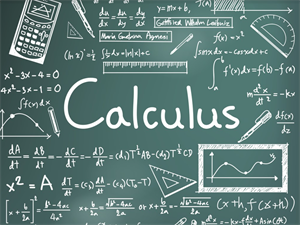
PUMPA - SMART LEARNING
எங்கள் ஆசிரியர்களுடன் 1-ஆன்-1 ஆலோசனை நேரத்தைப் பெறுங்கள். டாப்பர் ஆவதற்கு நாங்கள் பயிற்சி அளிப்போம்
Book Free Demo A few months earlier, Ramanujan had sent a letter to the great mathematician G. H. Hardy, of Cambridge University, in which he set out 120 theorems and formulae. Among them was what is known as the Reimann Series, a topic in the definite integral of Calculus. But Ramanujan was ignorant of the work of the German mathematician, George F. Riemann, who had earlier arrived at the series, a rare achievement. Also included was Ramanujan’s conjecture about the kind of equations called “modular”. Pierre Deligne subsequently proved this conjecture to be correct.
It did not take long for Hardy and his colleague, J.E. Littlewood, to realise that they had discovered a rare mathematical genius. They made arrangements for Ramanujan’s passage and stay at Cambridge University. On March 17, 1914, he sailed for Britain.
Explanation:
Ramanujan was a very determined person. He did not give up on his dreams and settle for less when he failed in his exams. At the same time, he was practical enough to get a clerical job to sustain himself and work on his skills. Whilst he was working and completing his research at Madras University, he felt the need to reach greater heights. He aimed for the highest as he sent a letter to the great Mathematician G.H. Hardy of Cambridge University.
He is a perfect example of how one must not belittle themselves after a failure. Any person in his position would have easily given up after two consecutive failures. But Ramanujan understood that he was good at Maths and that it could take him to greater levels. So he did not bother about the ones that he was not good at, and instead, he focussed on sharpening his skills in Maths and exploring all areas possible. Cambridge was the best institution of the time, and he sent all his 120 theorems and formulae that he had worked on throughout his years. Among the formulae was a very famous series called the Reimann series, which was very important in a topic called Integral Calculus. Integral calculus deals with total size or value, such as lengths, areas, and volumes. But since it was an age without social media or the internet, he was not aware that his formulae were already solved by a German Mathematician named George F. Reimann. The series was even named after him. But Ramanujan had cracked such a rare series at a very young age, which Reimann had taken years to complete. Ramanujan had worked on the series without being aware of it existing already, which showed that he was capable of great things.

Calculus
He also included a type of equations called "Modular". Although this equation was only a hypothesis, Pierre Deligne, another great Mathematician, proved it to be right. As soon as the letters reached Hardy and his colleague J.E. Littlewood, they understood that they had found a genius. The equations that took their own men who were trained them, was solved by a person who had no proper training or degree. Ramanujan researched and most of his theories were based on self-learning. They immediately contacted Ramanujan and made arrangements to move from India and reach Cambridge in Britain. He set sail for Britain on March 17, 1914, which proved as a life-changing experience for him.
Words with Difficult Meaning:
| S.No | Words | Meaning |
1 | Conjecture | To guess about something without real proof or evidence |
2 | Calculus | A branch of mathematics that deals with rates of change, for example the speed of a falling object |
3 | Colleague | A person with whom one works with |
4 | Consecutive | Happening one after the other |
5 | Determined | Firmly believing that one would succeed |
Reference:
State Council of Educational Research and Training (2019). Term-2 English Standard-9. From Zero to Infinity (pp. 81-93). Published by the Tamil Nadu Textbook and Educational Services Corporation.